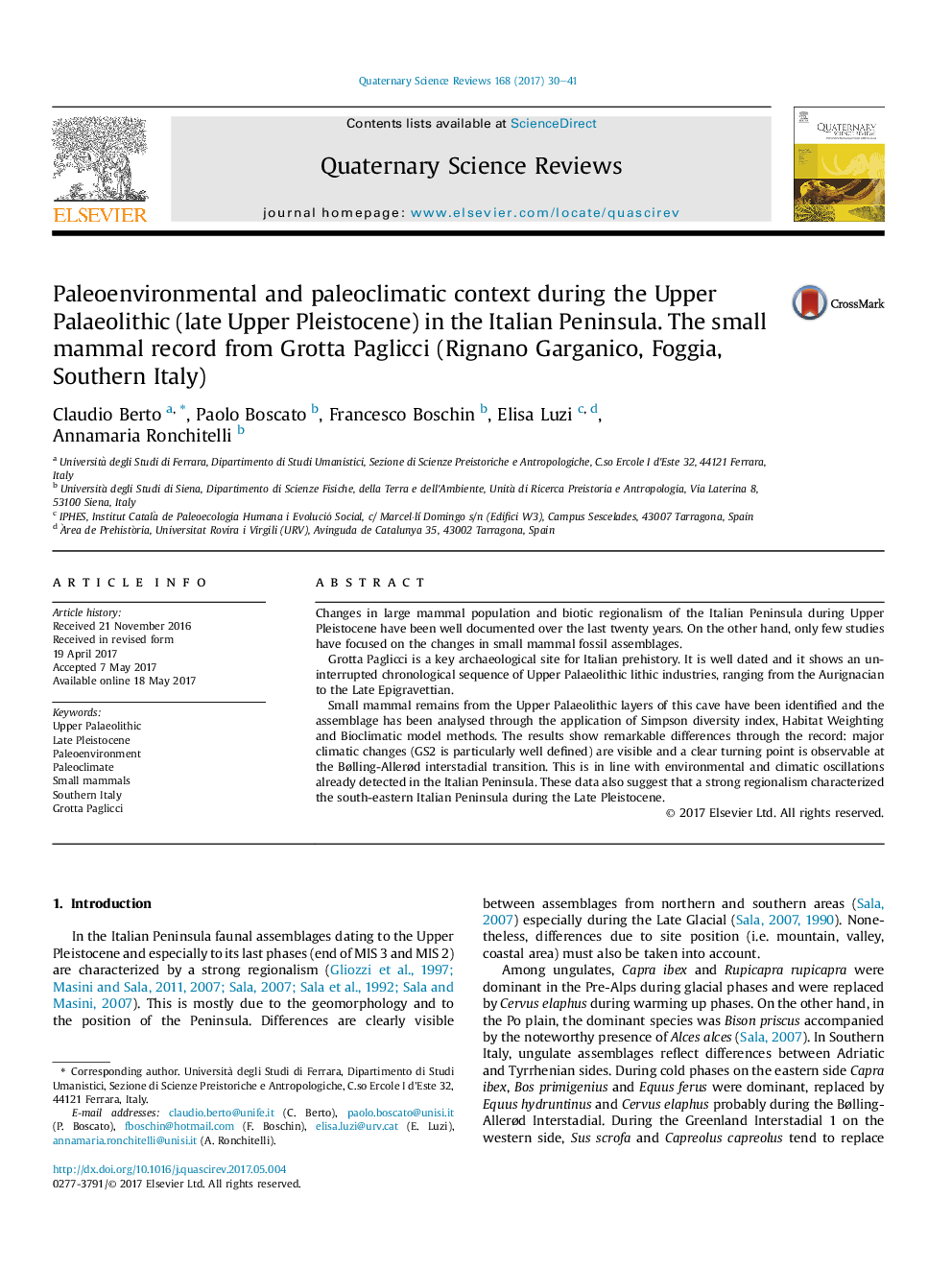| Article ID | Journal | Published Year | Pages | File Type |
|---|---|---|---|---|
| 5786606 | Quaternary Science Reviews | 2017 | 12 Pages |
Abstract
Small mammal remains from the Upper Palaeolithic layers of this cave have been identified and the assemblage has been analysed through the application of Simpson diversity index, Habitat Weighting and Bioclimatic model methods. The results show remarkable differences through the record: major climatic changes (GS2 is particularly well defined) are visible and a clear turning point is observable at the Bølling-Allerød interstadial transition. This is in line with environmental and climatic oscillations already detected in the Italian Peninsula. These data also suggest that a strong regionalism characterized the south-eastern Italian Peninsula during the Late Pleistocene.
Related Topics
Physical Sciences and Engineering
Earth and Planetary Sciences
Geology
Authors
Claudio Berto, Paolo Boscato, Francesco Boschin, Elisa Luzi, Annamaria Ronchitelli,
